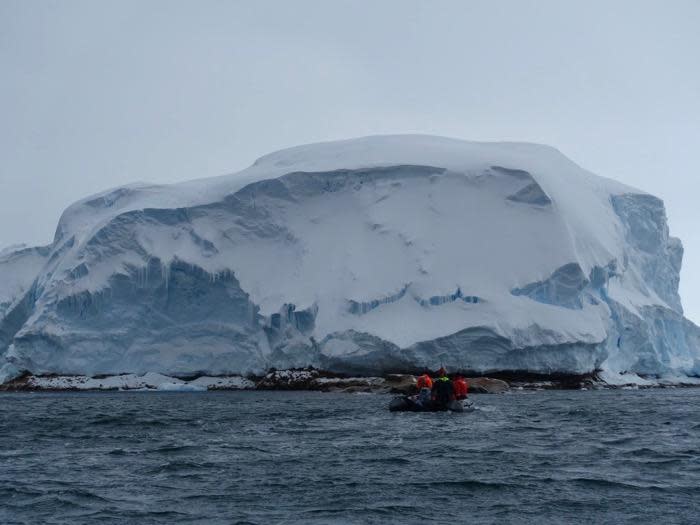Hidden island in Antarctica resurfaces as climate change melts ice

Retreating ice has revealed something very unusual in Antarctica – a hitherto-unknown island, buried beneath the ice.
Scientists from Thwaites Offshore Research (THOR) spotted the island when their ship passed through the area.
The island is 1,000 feet long and the researchers opted to name it Sif after a Norse goddess associated with the Earth, although they did toy with the name Pete after the man who spotted it.
Read more:
Antarctica now has more than 65,000 meltwater lakes
Scientists drill into mysterious lake buried 3,500 feet under Antarctica
Sarah Slack, of THOR, wrote: “A few weeks ago, the navigational officer on watch (the person driving the ship) saw something unusual – land. There's a lot of ice and water here, plus an occasional bird or mammal, but land is a great rarity.
“A small island had been revealed as the massive chunk of ice perched atop it disappeared at the edges.”

To begin with the researchers thought that the ice on the outcrop was an iceberg, which had lodged there.
“Now we think that the ice on the island was once part of the Pine Island Glacier ice shelf, a massive field of floating ice that extends outward into the ocean from the edge of the glacier,” Slack said.
The island is formed of igneous rock, and samples have been sent to researchers at Imperial College, London, the researchers say.
Read more: Antarctic records hottest temperature ever
Teams of scientists are drilling into the nearby Thwaites Glacier, which has been described as the “doomsday glacier”, to find out if it’s about to collapse.
Thwaites Glacier is 74,000 square miles, the size of Britain, and is thought to be particularly susceptible to climate change.
Even now, ice draining from Thwaites into the Amundsen Sea accounts for about 4% of global sea-level rise.
Over the past 30 years, the amount of ice flowing out of Thwaites and its neighbouring glaciers has nearly doubled.

 Yahoo News
Yahoo News 
